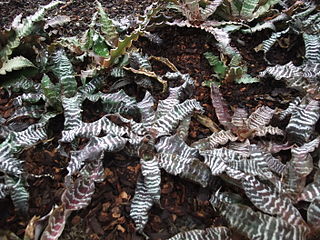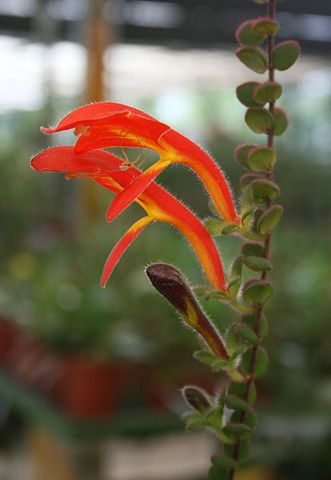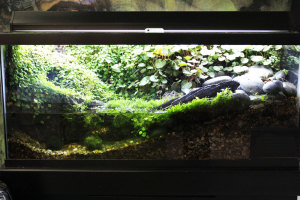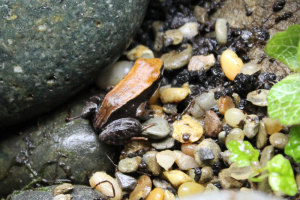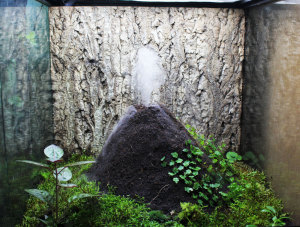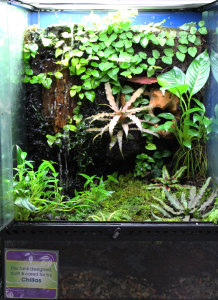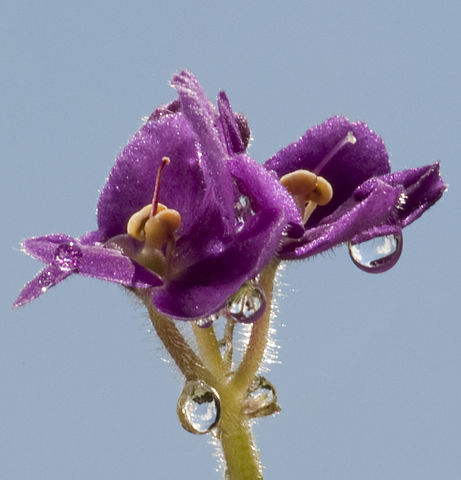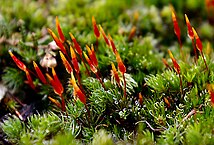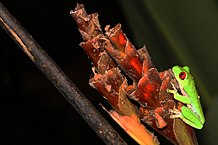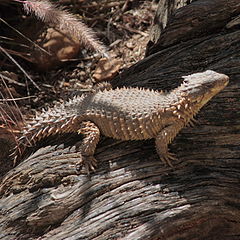
Uploaded to Wikipedia Commons by Eric Johnston
Whether you keep a single, cold-hearty Common Snapping Turtle or a large collection of tropical lizards, frogs and tarantulas, cold winter weather brings certain challenges. This is especially true for those of us who, in the interests of environmental and financial responsibility, do not wish to super-heat our homes in order to satisfy our pets’ needs. While working at the Bronx Zoo, I always sought the advice of our staff electricians when faced with heating issues. Today I’ll review what I’ve learned there concerning various types of heating devices, cage material and location, insulation and other topics that take on special importance when temperatures drop.
Seek Professional Advice
I always advise herp keepers facing extreme winters to speak with an experienced electrician. Most of us know a great deal about our pets’ needs and the available heating products, but as “electricians” we are usually “self-taught” (not a term that should be used in connection with electricity!). Incorporating an electrician’s expertise will save time, money and, most importantly, assure our safety.
Concerning safety, please be aware that free-roaming dogs, cats, ferrets, tortoises, iguanas and other pets cause a number of fires each year (pushing papers and other flammable items close to heaters and bulbs, knocking over heaters, etc.). I have first-hand knowledge of several such incidents, as well as others caused by improperly-located heat bulbs…please exercise caution.
Be sure to show your electrician the bulbs and other equipment that you use, and request guidance concerning safe distances from plants and other flammable objects, extension cord use, etc. Don’t forget thermostats and rheostats – I was surprised to learn that these can sometimes drain enough power to interfere with the functioning of heaters and bulbs.
 Room Temperature and Cage Location
Room Temperature and Cage Location
Room temperature will greatly affect you choice of heating equipment. As most folks lower their heat at night, be sure to monitor temperatures at this time. Oil-filled radiators may be a useful option, especially if you house your collection in a single room.
It’s important to have a detailed temperature profile of the rooms in which your terrariums and cages are located. The Zoo Med Digital Infrared Thermometer provides a simple, effective means of accomplishing this. Pointing the thermometer at an area or surface will give an instant temperature readout, allowing you to identify the warmest and coolest places in the room. While exterior walls, floors and window areas are obvious cool spots, each home is different, so be sure to check carefully. A simple terrarium re-location may save time, effort and money.
Terrarium ambient and basking temperatures should be carefully monitored, day and night; a huge array of herp-specific thermometers greatly simplifies this task. Zoo Med’s Hygrotherm Humidity and Temperature Controller and other light and heater timers can help create healthful environments while cutting heating costs.
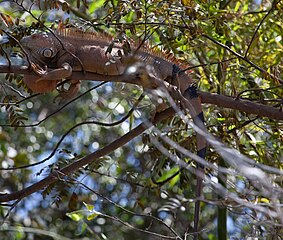
Uploaded to Wikipedia Commons by Paul Kehrer
Insulating Terrariums and Cages
Insulation is not often used by herp and invertebrate keepers, but I urge you to look into the many possibilities. I first discovered insulation during a power outage, and was surprised by the results I achieved. I’ve since met several people who significantly cut their heating costs by lining terrarium and cages walls with various insulating materials. Styrofoam, cork panels, polyethylene, polystyrene, foil fiberglass, bubble wrap and other home insulating materials may all be put to good use. Towels and blankets can be pressed into service during emergencies.
Wood and Masonite-sided cages will retain heat more effectively than glass, but all can be improved by the addition of insulation. If such does not compromise your pet’s health, relocation to a smaller, more easily-heated enclosure might be worthwhile.
Bulbs and Heaters
Ceramic heat emitters, heat bulbs, under-tank heaters, red/black night bulbs and heat tapes are the most commonly-used heating devices. Each provides heat in a different manner, although in certain respects there are overlaps as well. The species you keep, your home’s temperature profile, and the characteristics of your pet’s enclosure will determine which method (or methods) should be used. Please post below for specific information pertaining to your collection.
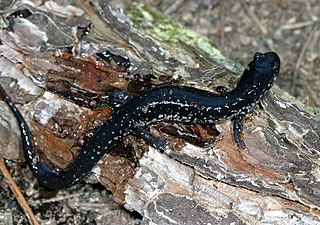
Uploaded to Wikipedia Commons by Patrick Coin
Species Choice
If you live in an area that experiences extremely cold winters (or hot summers), you may wish to tailor your collection accordingly. For example, axolotls, spotted and slimy salamanders, wood frogs and many other temperate zone amphibians are quite content at 55 F (fire salamanders that I attempted to chill down remained active at 40 F), but many do poorly when temperatures rise above 70 F. Common musk turtles, northern five-lined skinks, Eastern garter snakes and other reptiles that range into cooler regions are also relatively easy to maintain during cold winters. There’s certainly no shortage of interesting, cold-hearty species, and many are in need of study and captive breeding efforts.
Hibernation/Brumation
A cooling off period during the winter can be beneficial for those species that experience dormancy in the wild, and is often essential to breeding success. However, this step must not be undertaken lightly, and details vary by species. Please post below for specific information on the animals in your collection.
Emergencies and Power Outages
Hand warmers and battery-operated aerators (for aquatic amphibians and fishes) should be available for use during power outages. I’ve not used a generator at home, but relied upon them several times during my years working at the Bronx Zoo…well-worth investigating.
Chilled reptiles, amphibians and invertebrates should be gradually warmed, not immediately placed at their optimal temperatures. Heating pads are very handy in these situations. Please post any questions or observations below.
Further Reading
The Best Infrared Temperature Gun for herp Terrariums
Hibernation/Brumation: Bearded Dragons and other Reptiles
 Most herp enthusiasts know that amphibians are usually quite sensitive to warm temperatures. However, reptiles, even those native to tropical and desert habitats, may be severely impacted as well. Following are some general guidelines to keep in mind at the height of summer – please write in for more detailed information about the animals in your collection.
Most herp enthusiasts know that amphibians are usually quite sensitive to warm temperatures. However, reptiles, even those native to tropical and desert habitats, may be severely impacted as well. Following are some general guidelines to keep in mind at the height of summer – please write in for more detailed information about the animals in your collection. That Reptile Blog – Reptile, Amphibian and Exotic Pet Care and Information
That Reptile Blog – Reptile, Amphibian and Exotic Pet Care and Information




